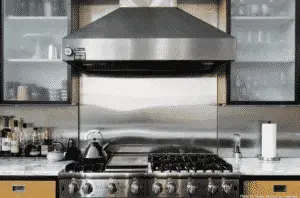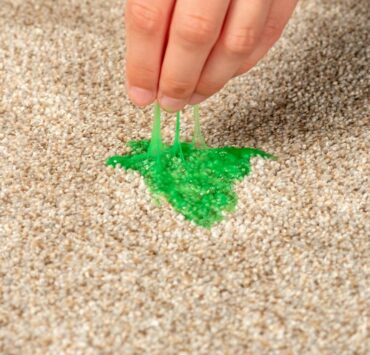The short answer is yes; you can paint black plumbing plastic tubes and change the color of black plumbing plastic tubes as much as you like.
Plumbing plastic tubes are made out of a highly durable plastic called Poly Vinyl Chloride, otherwise known as PVC. PVC pipes are the plumbing industry’s choice of piping material. It’s highly durable, chemically non-reactive, doesn’t rust as quickly or easily as metal, and its uses can go far beyond plumbing purposes.
There are many possibilities to use or reuse PVC pipes for DIY craft projects. Its sturdy and non-reactive qualities make it a fantastic piece to utilize across all kinds of projects. PVC pipes can be used to create an irrigation system for aquaponics, ventilation ducts, a bike rack, a baby gym, a frame for a pet cot, a hose stand, etc.
With that said, you’ll typically find PVC pipes painted black. Depending on what you’d like to use your plastic plumbing tubes for, it’s understandable if you’re wondering if you can paint over black plastic plumbing tubes.
Whether you want to lend a more natural aesthetic and paint your plumbing plastic tubes green or want to paint it a neutral beige or perhaps a clean and streamlined white, you can paint PVC any color to match your project. When done right, a painted plumbing plastic tube transforms the entire look and function of what was initially a plumbing pipe.
Types Of Paint You Can Use
PVC tubes require preparation, and the right paint is crucial to paint a color that will stick successfully. PVC pipes won’t just take any paint; using the wrong one can result in flaking, bubbling, or wiping right off.
You can use the following types of paint for plastic plumbing tubes:
- Epoxy Based Paint
- Enamel Oil-Based Paint
- Plastic Rated Spray Paint
Do not use the following paint for your plastic plumbing tubes as they will not stick to the PVC:
- Water-based paint
- Acrylic-based paint
- Latex-based paint
- Any not explicitly labeled as plastic rated paint
If you’re unsure if the paint you have on hand is suitable to paint your PVC pipes, check the label.
How To Paint Plumbing Plastic Tubes
You can virtually paint plastic plumbing tubes in any color available to your choice of paint.
Follow these steps to paint plumbing plastic tubes:
1. Prepare Your Materials
Cover any areas that may be subject to unwanted flyaway paint, paint drips, and spills by removing movable items and lining the area with plastic, and taping it down.
When your area is prepared, line up your materials, so they’re ready to use. Painting plastic tubes will typically require:
- Plastic-rated paint of choice
- Work gloves
- 220 grit Sandpaper
- Protective eyewear
- Clean rag
- Acetone
2. Choose The Right Time And Place
The ideal conditions for painting require low humidity in a well-ventilated area. Where possible, aim to paint in an environment that’s no less than 10 degrees and no more than 30 degrees Celsius.
3. Prep Your Pipe
Using sandpaper, smooth down your pipe’s exterior. Be careful not to sand down your pipe too much to the point that it will compromise its thickness. The target is to ensure a smooth and even surface for a seamless paint finish.
Once the pipe is smooth, wipe down the pipe, and any excess sanded bits with a rag dampened with acetone. The acetone also doubles as a swelling agent, making the pipe more porous and therefore making it easier to get paint and primer to stick. You want to ensure that there are no sanding bits, as this will show up in the paint finish. Give the acetone a half hour to fully evaporate from the pipe before proceeding to paint.
4. Prime Your Pipe
Any primer can be used as long as the formula is specifically labeled for plastic. Although many plastic-rated paints are formulated already with a primer, you’ll need to double-check if a primer is in the mix. If your color doesn’t have primer, prime your PVC pipe before proceeding to paint.
Even with plastic-rated paint, you need a primer for a flawless paint job, as the primer will allow the paint to stick to the pipe better.
5. Painting Your PVC Pipe
Lastly, spray or brush your paint in sweeping motions, working your way up and down across your pipe. A little as you go is the best approach to get even and consistent layers. Apply a thin layer at a time. Keep layering on your paint until you reach the ‘true color’ or desired look. Check with your paints label instructions on the drying time, usually 20-30 minutes, before proceeding to apply another coat.
6. Let Your Paint Dry
Once you’ve finished painting your black plumbing plastic tube, allow it to cure and air dry for at least 24 hours before picking it up. Depending on the project you’ll be using the PVC pipe for, consider waiting a week to allow the paint to cure further and harden before handling to avoid damaging the paint job.
Lastly, cleaning your PVC pipe with a damp microfiber cloth is all you need to do to maintain your paint job. Use a dampened microfiber cloth to wipe down dirt.
Whether your plumbing plastic tubes are black or white, regardless of their initial color, you can paint them the color of your choice to match the project of your choice. All you need is the proper preparation and painting materials to help you achieve the custom color and overall aesthetic of virtually any DIY endeavor you decide to take with a PVC pipe.









